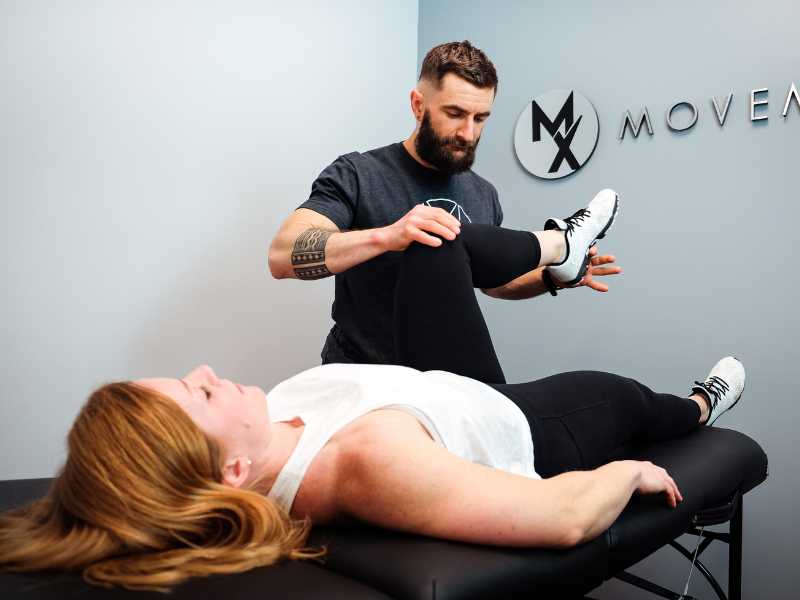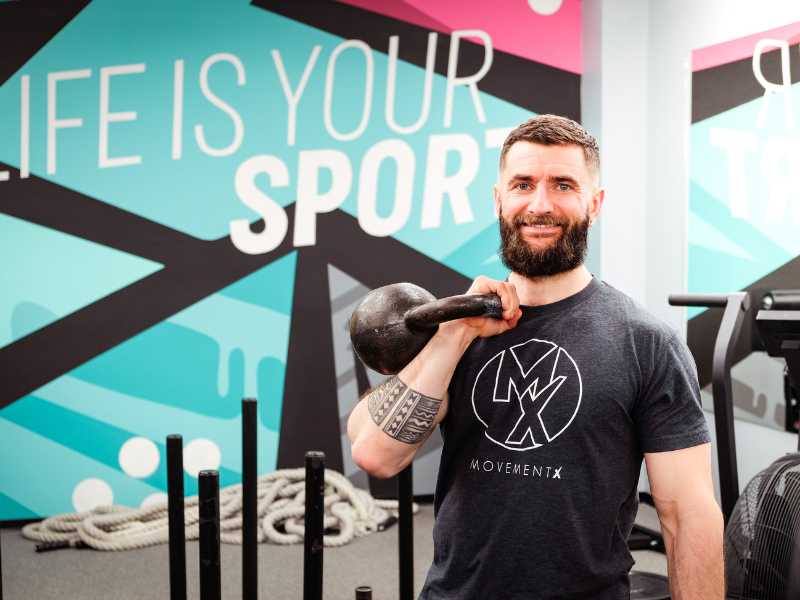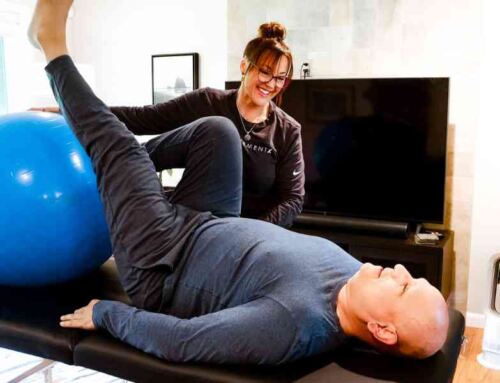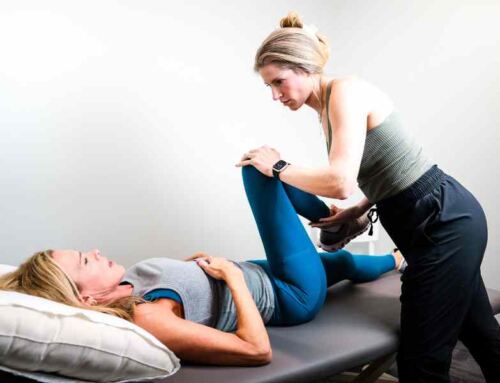Pain: Our Body’s Alarm System
When I develop a plan of care for a patient, there are certain themes I emphasize to everyone. First and foremost, pain is information. In an acute injury, pain is our body’s alarm system telling us there is an injured tissue that requires healing. Pain informs us about the types of movements that are stressing that injured tissue that we need to temporarily modify to allow proper healing to take place.
As a sidenote, chronic pain is another beast entirely, and that information is not always helpful. Chronic pain often exists in the absence of tissue damage. But that’s a topic for another blog post.
The type of information that pain provides during an acute injury process is one I advise my patients to take very seriously. It’s not something to push through nor is it something to ignore.
Of course, we’re humans on planet earth, myself included, and our egos very often push us to drown out that information in the pursuit of some higher purpose or goal.
So it was that I found myself in the exact predicament many of my patients face. Listen to my body and do the smart, logical thing or ignore the information my body is giving me and continue on. Well my friends, I’m here to tell you that I, like all of you out there, am subject to the same shortcomings as every other human with an ego. I hope you are able to learn from my story and the next time you feel some acute pain, you make better choices than I did.
Context: The Injury
In the middle of February, I set out one evening on a 7 mile ruck. I have a goal of completing a marathon ruck this year for no other reason than I want to try something really hard.
Saturdays had become my day to go out for progressively longer rucks, and today felt no different. I planned a 3.5 mile loop that I was going to do twice and I started out at a good pace. About 3 miles in, I took a weird slip and stumbled hard onto my right leg (it was snowing that night) and soon after, my knee started to bother me. I decided to keep going to see how it changed over the next few minutes, and it didn’t get worse, but it certainly wasn’t getting better. I decided to push on and the pain persisted, but still didn’t seem to get worse. Around mile 5, the pain actually started to ease up, so I figured I was in the clear.
By the time I got back inside and took my pack off, I realized something was definitely wrong. I had trouble straightening my knee and it was visibly swollen by my kneecap.
The structure in question is my prepatellar bursa, a small fluid filled sack that allows the quad tendon to slide smoothly over the knee cap. I spent a few minutes doing some compression banding for it, a technique I learned from Dr. Kelly Starrett of The Ready State many years ago. That took the swelling down and my knee range of motion slowly improved over the next few hours. When I woke up the next morning, things seemed mostly back to normal.

Ignoring the Signs
Over the next month, I basically ignored my knee. I stopped rucking as hard or as long, since the few rucks I tried after the inciting event definitely aggravated my knee. But with a little compression banding and time, it felt “better”, at least enough to goad me into trying just one more ruck to see if it was back to normal.
My CrossFit workouts continued as per usual, and for the most part, things felt fine afterwards. On days where I squatted, jumped, or lunged, I felt some discomfort straightening my knee, but I thought, eh, I’ll keep on using the compression band and it’ll go away eventually.
Well, I wouldn’t be here writing this blog post if it did.
Instead, things slowly got worse over the next few weeks. Soon, my knee was swelling more significantly after more and more workouts to the point where it just wasn’t going away. My compression band proved a little less effective each time. I threw on a knee sleeve thinking that a little extra compression during workouts might help.
I even tried dry needling my own quads, hoping that taking some tension out of the muscles would ease up on the pressure my bursa was feeling.
When taking the dogs for a walk started to bother me, I realized I needed to do something different. Taking the dogs out was my way of spending quality time with my family. And it’s something I simply couldn’t stop doing because they can’t take themselves for a walk! I needed to start taking this seriously, so I resolved to treat myself like I would any other patient.
Taking Things Seriously: Rehab and Recovery
I started by consulting with a friend and former patient who is an APRN about the next best steps for the swelling in my bursa.
She recommended against getting it drained simply because draining comes with its own risks and doesn’t always provide a permanent fix. She recommended I wear a compression sleeve around the clock. So I went to CVS, bought a sleeve and did just that.
In addition, I heavily modified my training and lifestyle by diligently avoiding the stressors to my bursa. I also added in basic swelling management techniques I would give to any patient.
Over the next two weeks, the swelling went down dramatically and continues to get better each day. My training looks a little different, but I am still able to move and get a great workout at my CrossFit gym. Sure, the compression sleeve was irritating at first, but it’s far preferable to being in pain simply taking a walk each day.
I also consulted with a local orthopedic surgeon to see if there was anything else that could be done, and he said much the same thing as my APRN friend. Compression is slower but safer than draining at this point and I’m on the right track.
That brings me to today. I’m still modifying my CrossFit workouts, biking every day to move fluid out of my knee, and coordinating outfits around my black and green compression sleeve.
I haven’t been able to squat, jump, run, or ruck for over two weeks, but you know what? That’s okay. I’m taking this as an opportunity to get better at hip hinging movements like kettlebell swings and deadlifts.
I’ve been doing more single leg and core work. I’ve been using the ski erg instead of the rower for my cardio. As a result, my triceps and glutes are bigger and better than ever and my knee is improving every day. I might not be able to work directly on my goal of a marathon ruck for now, but everything I’m doing is able to keep me fit, healthy, and happy in the meantime until I can get after it again!

Self-Reflection
As a rehab professional, I knew exactly what to do the moment I started feeling that pain in my knee. I knew what I should have been doing that entire month leading up to my decision to finally take action. What stopped me from doing what I knew I should? Simple, I’m a human subject to all of humanity’s flaws. I let my ego get in the way and ignore the initial pain.
I thought with basic maintenance and some time, things would just go away. It wasn’t until I buckled down, and really took my rehab seriously that things improved. Wouldn’t you know, giving my bursa the proper healing environment is doing the trick.
I don’t expect you to read this story and be the perfect patient every time you feel pain in the future. That’s not realistic, and personal experience is often the best teacher.
But the next time you feel a tweak in your back or a pull in your hamstring, I hope you hear my voice in the back of your head saying, “Don’t be a dummy, make a better decision than Matt did.”
Lessons Learned and Lessons Shared
- Pain Is a Signal, Not a Challenge – Listen to your body’s warning signs and recognize that little voice in your head telling you to push through is your ego.
During an acute injury process, recognize the pain you feel is your body’s alarm system going off saying “Hey dummy, something’s wrong!” I highly recommend you pay attention to that alarm. - Modify, Don’t Stop Moving – There is always some way you can stay moving during periods of injury. Find a rehab professional you trust who will guide you through all the ways you can stay active during your recovery process.
Hint, MovementX is the ideal place to start!!! Your training will look different for a period of time, but different isn’t bad! It’s just different. Use this period as a time to hone in on a new skill or improve an area of your fitness that you struggle with! - Seek Professional Advice Early – Don’t wait until the injury worsens to take action. You’re only prolonging the overall time it takes to recover. I’m not saying you need to run to your PT with every little ache or pain.
But if you are seeing consistent patterns to your pain, and things are getting worse, not better after a couple weeks, it’s time for things to be checked out by a professional. - Healing Takes Time—Be Patient – Stay the course, and trust the process! Your body’s tissues will heal if you give them the right healing environment.
Think about it this way. When you have a cut on your arm, it scabs over in order for the skin underneath to knit back together. If you pick the scab, you disrupt that healing. By constantly doing the movements or activities that irritate your muscles, tendons, or joints, you are picking the scab.
Don’t pick the scab.
Final Thoughts
Staying disciplined through an injury is not easy. You are going to be presented with numerous opportunities to stray from the path. Find someone who can keep you accountable during this period so you don’t have to undertake this journey alone.
In my case, I’m using my patients to keep me accountable! By telling this story, I’m putting my own struggles to practice what I preach out into the universe.
As humans on planet earth, we are all subject to the same shortcomings. But that also means we are capable of overcoming those challenges and making better decisions in the future.
I hope my experience can serve as a reminder to make the right decision early on and prioritize your musculoskeletal health over the urgings of your ego.







